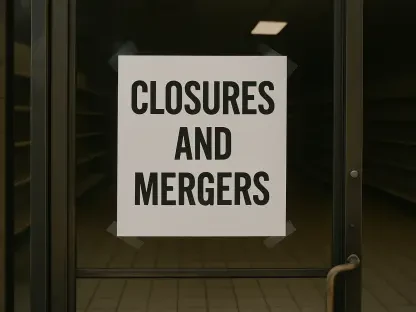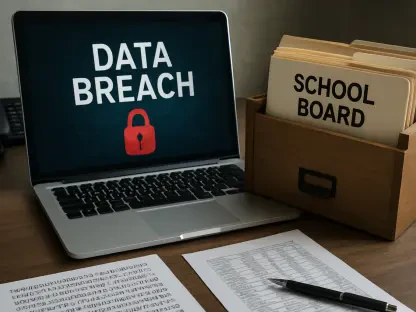As the U.S. Department of Education undergoes a historic shift in its role, we’re thrilled to sit down with Camille Faivre, a renowned expert in education management. With a deep focus on navigating the complexities of educational systems in the post-pandemic era, Camille has dedicated her career to supporting institutions through innovative solutions like open and e-learning programs. Today, she offers her insights on the recent decision by the Trump administration to transfer management of several key programs to other federal agencies, a move tied to broader goals of reducing federal oversight in education and empowering states and local communities.
Can you walk us through the driving forces behind the U.S. Department of Education’s decision to hand over management of six programs to other federal agencies?
Certainly. The core motivation here is the administration’s push to scale back federal involvement in education. They’ve been vocal about wanting to cut through what they see as bureaucratic red tape and give states and local communities more say in how federal funds are used. The idea is that decentralizing control will lead to more tailored, efficient decision-making that directly benefits students and schools. It’s part of a larger narrative of returning education governance to a more localized level, which the administration argues is better equipped to address specific needs.
How does this shift in management aim to benefit states and local communities specifically?
The administration believes that by moving program management away from a centralized federal body, states and communities will gain more flexibility to allocate resources in ways that align with their unique challenges and priorities. There’s also an expectation of cost savings—less bureaucracy could mean more dollars reaching classrooms rather than being absorbed by administrative overhead. The hope is that this will foster innovation and responsiveness at the local level, though it’s still a bit of a gamble on whether states have the capacity to step up effectively.
Could you break down which programs are being transferred and why specific agencies were chosen for each?
Sure. The programs being moved include elementary and secondary education grants and postsecondary institution-based grants, both going to the Department of Labor due to their focus on workforce preparation. Indian education programs are shifting to the Department of Interior, likely to align with broader tribal affairs oversight. On-campus child care support and foreign medical accreditation are heading to Health and Human Services, which makes sense given their health and family service expertise. Lastly, international education and foreign language studies are moving to the Department of State, reflecting their diplomatic and global focus. Each transfer seems to aim at matching program goals with agency strengths.
What can we expect in terms of day-to-day operations for these programs once they’re under new management?
From what’s been shared, the Department of Education will retain nominal responsibility for these programs, but the nuts and bolts—things like grant distribution and technical support—will be handled by the receiving agencies. This means states and districts might be interfacing with new points of contact at agencies like Labor or Interior. There’s a promise of continuity in expertise, with staff transitioning alongside the programs, but the real test will be how seamlessly these operations adapt to new environments and leadership structures.
How is the administration addressing concerns that spreading programs across multiple agencies could lead to confusion or inefficiencies?
The administration has been emphasizing that these interagency agreements are designed to streamline, not complicate, operations. They’ve committed to maintaining what they call ‘concierge-level service’ for states, suggesting a focus on clear communication and support during the transition. There’s also an assurance that the expertise of current staff will be preserved by transferring them to the new agencies. However, critics remain skeptical, and it’ll come down to execution—how well these agencies coordinate and whether states feel supported in navigating the changes.
With talk of eventually closing the Department of Education, what’s your take on the current status of that long-term goal?
Closing the Department entirely is still on the table, as both the President and the Education Secretary have been vocal about it. But it’s not a simple process—it requires congressional approval, which is a significant hurdle given the political divide on this issue. The recent workforce reductions, with staff numbers cut nearly in half since the administration took office, signal a clear intent to downsize. Yet, reinstatements after the government shutdown show there are legal and practical limits to how far they can push without broader legislative backing. It’s a slow, contentious journey toward that ultimate goal.
What challenges do you see in ensuring that educational equity and access remain priorities during this transition?
This is a critical concern. When you decentralize programs, especially those like Title I that target low-income schools, there’s a risk that disparities between states or districts could widen. Not all states have the same financial or administrative capacity to manage expanded responsibilities. There’s also the question of oversight—without a strong central agency, ensuring fair access to federal programs and protections for vulnerable students, like those with disabilities or in rural areas, becomes trickier. The administration will need robust mechanisms to monitor outcomes and step in if inequities emerge.
Looking ahead, what is your forecast for the future of federal involvement in education given these recent shifts?
I think we’re at a pivotal moment. If these transfers succeed in empowering states without sacrificing equity or efficiency, it could pave the way for even more decentralization. However, if confusion or disparities arise, there could be a pushback—either from Congress or advocacy groups—to reinstate a stronger federal role. The next few years will be telling, especially as political landscapes shift and new administrations might revisit these policies. My forecast is cautious optimism, but with a close eye on how well these changes serve all students, not just those in well-resourced areas.









